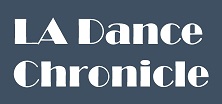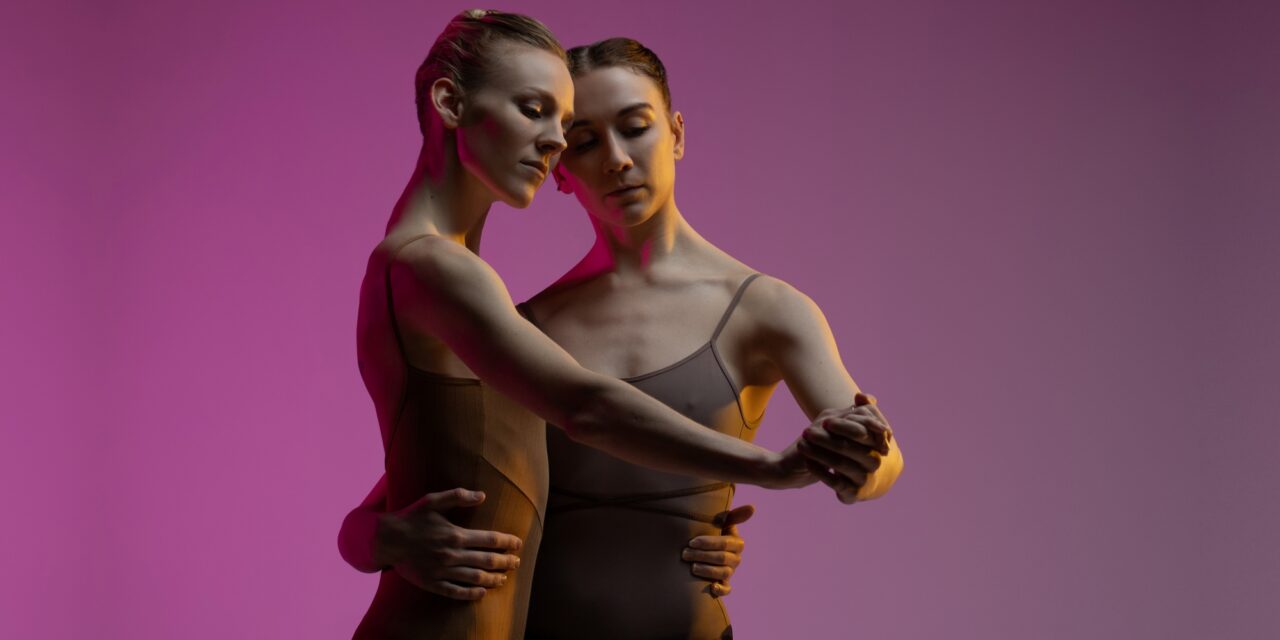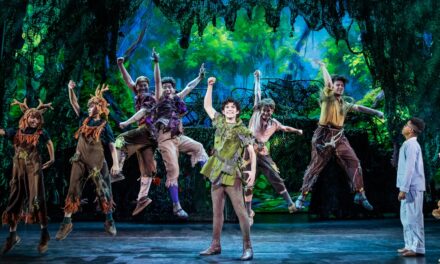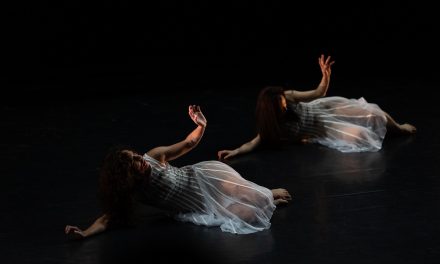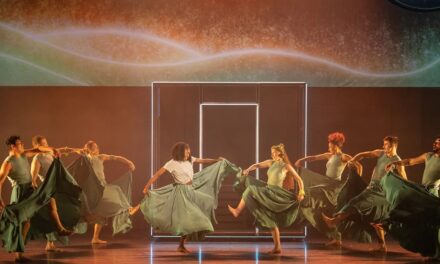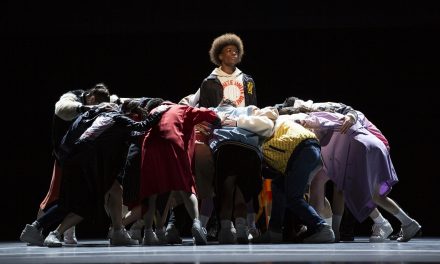Overall, Society’s view of the LGBTQ+ community has changed a great deal over the past few decades making it somewhat easier for men and women to emerge from out of the proverbial “closet” and live openly exactly as who they are – people. Recently choreographer Adriana Pierce has been providing mainstream visibility for LGBTQ+ artists via her company Queer the Ballet. In her own words, “Ballet needs to celebrate and amplify all of the unique voices which contribute to its beauty. The lack of meaningful queer visibility in our art form runs deeply, and my hope is that this initiative may create a new home in which all LGBTQ+ artists can feel seen and understood.”
Queer the Ballet is led by Founder & Artistic Director Adriana Pierce and Co-founder & Artistic Advisor Patricia Delgado. One of the company’s latest ballet Dream of a Common Language had its world premiere on June 21, 2024 at Baruch Performing Arts Center in New York. Choreographers Adriana Pierce, Minnie Lane, Rosie Elliott, and Lenai Alexis Wilkerson took their inspiration from the 1978 poetry collection of lesbian writer and activist Adrienne Rich. I was unable to attend the performances but thanks to Michelle Tabnick PR I had the opportunity to view a video recording. Although video is not the most optimal way to view dance, the work was powerful enough that I was very moved and thrilled to see these extraordinary dance artists perform.
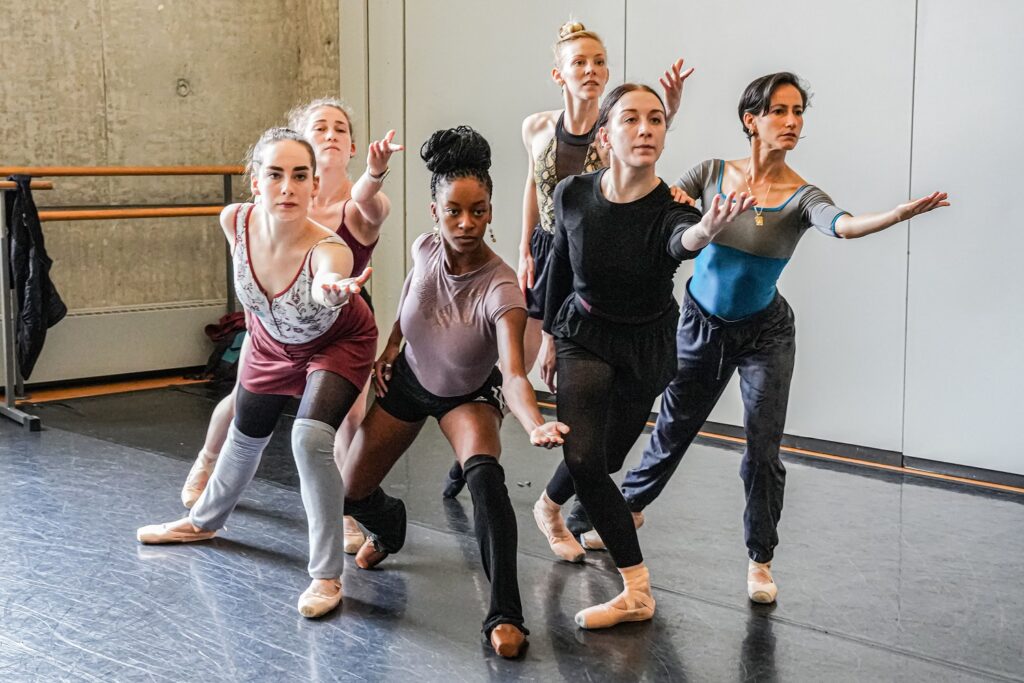
Queer the Ballet in rehearsal for “Dream of a Common Language – Photo courtesy of Baruch Performing Arts Center.
The ballet was built in seven sections: The Women I Love – Lightly Flung Against The Mountain, Splittings, I Want to Call this Life, It Is Her Business to Accept, Silk Rag, Love VI, and Dream of a Common Language. The lighting for the opening section was a bit too dark for the camera, but what came through was a group of six women tightly knitted together for support and protection on a journey forward. As if to represent letting down their defenses, each woman removed her jacket and began exploring and presenting to us their true selves.

Queer the Ballet in rehearsal for “Dream of a Common Language – Photo courtesy of Baruch Performing Arts Center.
There were two intriguing duets in this ballet, Splittings and I Want to Call this Life, that explored both sides of a same sex couple. The first presented two women who were truly attracted to one another but one was not totally certain if she was ready to let down her guard and ended up walking away from the relationship. The second was the absolute opposite. These two women, dressed in beautiful white slips were totally in love, devoted, and clearly building a life together. These feelings are, of course, not unique to same sex couples, but it is rare to see them presented onstage in ballet. It Is Her Business to Accept had the dancers in costume and preparing to perform. I got the sense of romantic attraction that was being resisted. It was clear that one woman considered herself different and the choreographer cleverly demonstrated this by having her remove her pointe shoes and dancing the remainder of the section in ballet slippers. She was different but equal.
Two favorite sections of mine were the sensual solo Silk Rag choreographed by Adriana Pierce and the emotional Love VI choreographed by Wilkerson. Each woman was dressed in different variations of black, white and beige costumes with sheer over blouses, dresses or pants. Here, each dancer was able to present her strengths as a dancer, performer and actress. Their movement was free, at times risqué and always enjoyable. We saw them as individual women with common interests. Lenai Wilkerson’s improvised solo was delicious to watch and the section of three duets simultaneously in unison only to break out into group work and back again was another highlight in the work.
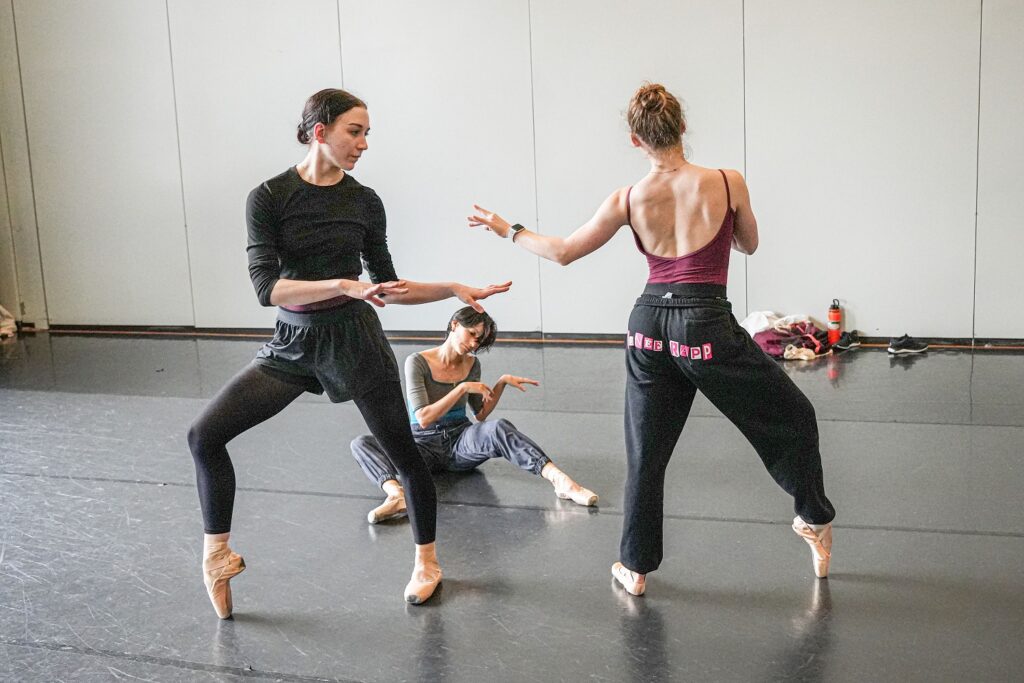
Queer the Ballet in rehearsal for “Dream of a Common Language – Photo courtesy of Baruch Performing Arts Center.
The final section, Dream of a Common Language, choreographed by Rosie Elliot involved the dancers performing fast footwork and movement phrases to a dynamic piano and strings score by Eve Beglarian. Solos morphed into duets followed by quartets and sextets. Unlike many ballet finales, however, this was not just about showing off the company’s technical abilities but the Elliot kept the company’s vision intact until the end, uniting the six women without losing their overall vision. It felt part of the work rather than a spectacular moment to showcase the entire cast.
What I truly enjoyed about Dream of a Common Language was its normalcy in presenting these six women to the ballet world. Each was an outstanding dancer and would fit into any classical ballet role. As the saying goes, love is love. The LGBTQ+ community is only a part of the world’s diverse quilt or tapestry. They are not better or worse, they are equal parts in our humanity.
Dream of a Common Language features choreography by Adriana Pierce Rosie Elliott, and with dramaturgy by Emily DeMaioNewton. The ballet’s brilliant cast was Mia Domini, Lauren Flower, Annie Hildago, Ayla O’Day, Demi Trezona, and Lenai Alexis Wilkerson. The music was composed by Eve Beglarian.
Although I did not have to see Lighting Designer Emily Clarkson’s work in person, I could tell that her work was strong and enhanced the choreographers’ visions. The gorgeous costumes that both moved beautifully and allowed one to see their movements clearly were designed by Taylor Barnett.
To learn more about Queer the Ballet, please visit their website.
Written by Jeff Slayton for LA Dance Chronicle.
Featured image: Queer the Ballet – Photo courtesy of Baruch Performing Arts Center.
